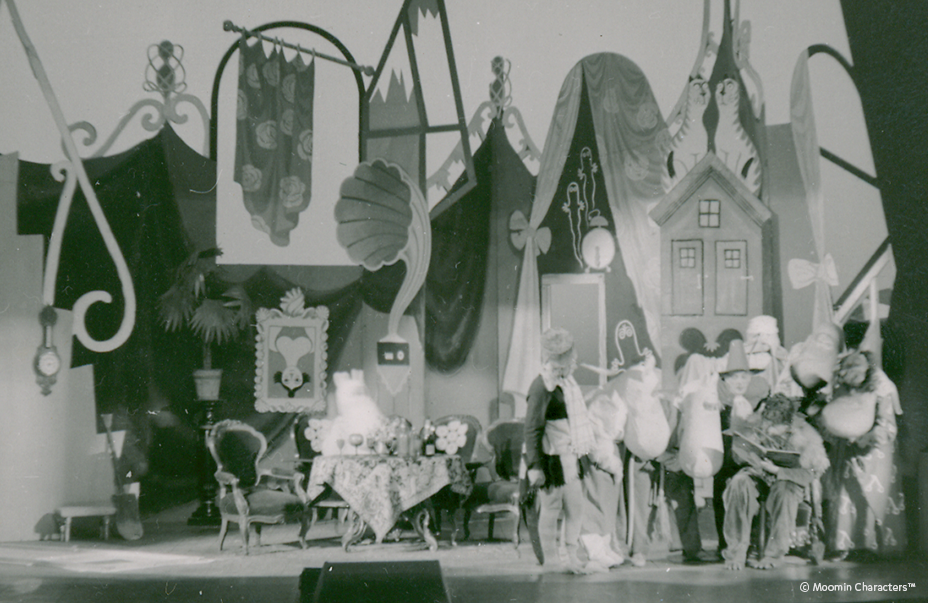Comet in Moominland is often considered the first “real” Moomin novel in the canon, although it was not the first published Moomin story. Learn all about the dramatic adventure where a comet threatens the very existence of Moominvalley!
This article is a very long (but interesting!) dive into the Comet in Moominland book, so below is a list of shortcuts.
NOTE! This article contains spoilers.
Jump to:
→ Comet in Moominland compared to the other Moomin books
→ Revised editions
→ Plot summary (including Tove Jansson’s summary for one of the first editions!)
→ Main characters in the book
→ Central locations
→ Comet Moominology – interesting Moomin facts from the book
→ Context: Comet in Moominland and the real world
→ Critical reception – how the book was received
→ Adaptations
Comet in Moominland is a book packed with adventure and excitement. The story centres around a comet that threatens to destroy Moominvalley. The inhabitants of the valley respond to the catastrophe in their own particular ways. Some are struck by the doom and gloom of it all; others engage in philosophical debates about the extent of the universe.
Some focus on calculating the exact time of impact, while others want to enjoy life, dance or bake cakes while there is still time. In true Moomin fashion, the story is full of humour and joyous adventures despite the existential threat.
Comet in Moominland established Tove Jansson as a storyteller with a unique, personal voice and an inimitable style. The novel introduces many of the residents of Moominvalley for the first time and is a great starting point for exploring the Moomin canon.
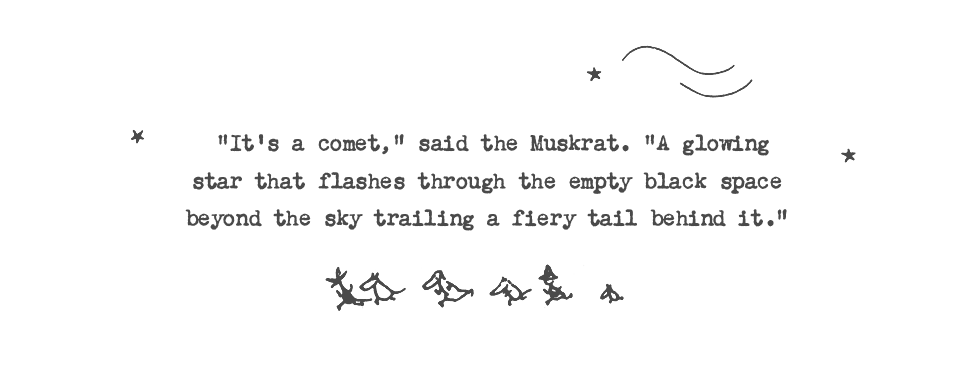
The Comet in Moominland book (Kometjakten) is considered the first “real” Moomin novel, although it was not the first Moomin story. The first Moomin story The Moomins and the Great Flood (Småtrollen och den stora översvämningen), was published in 1945, but wasn’t translated into English until 2012. It is not considered part of the core Moomin canon, which is seen to start with Comet in Moominland from 1946.
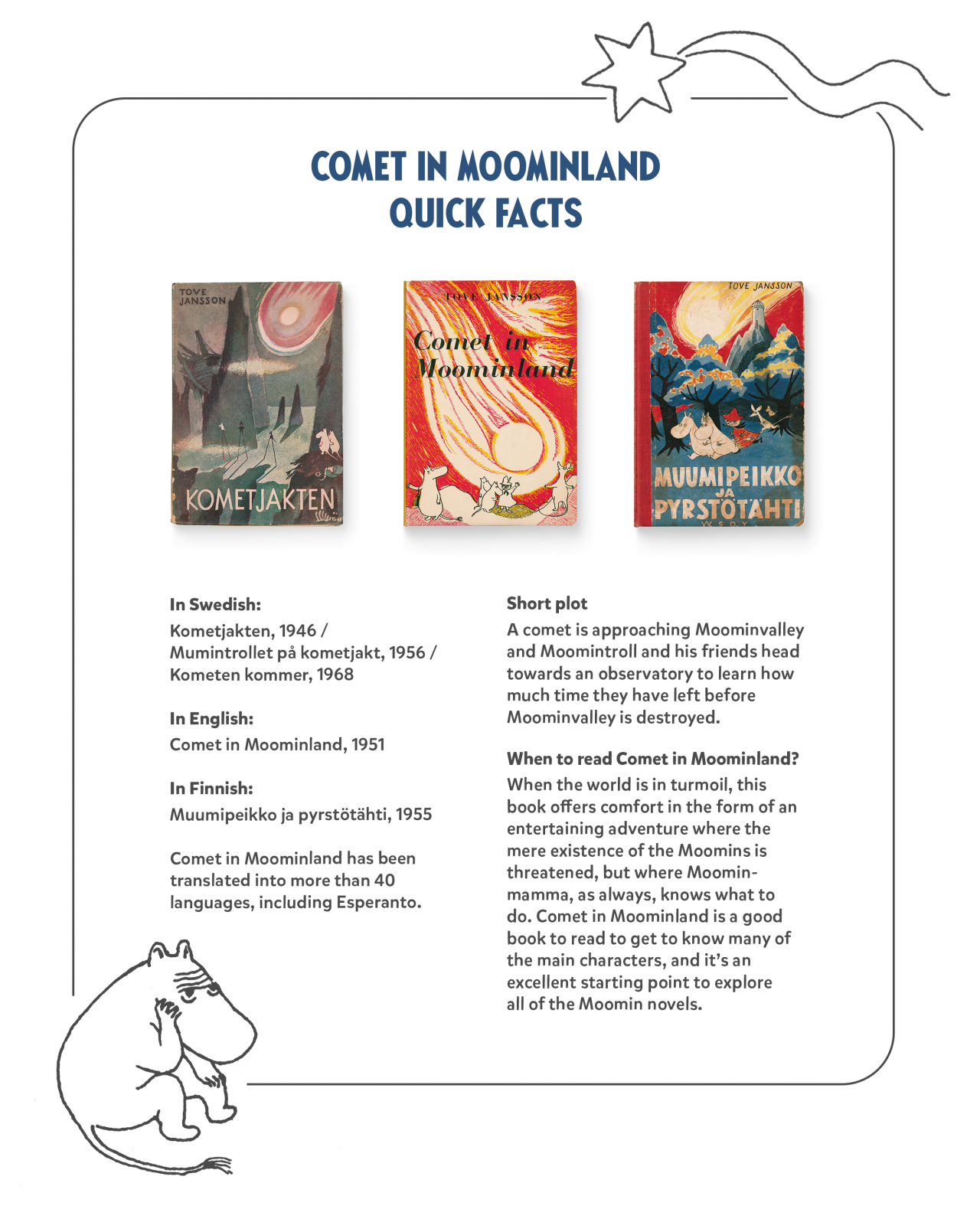
How does Comet in Moominland differ from the other Moomin books?
Compared to the melancholy in the last Moomin books, Comet in Moominland is a joyful, lively adventure despite the looming threat that penetrates the story.
Only the beginning and end take place in actual Moominvalley, but most of the action occurs in the Lonely Mountains and on the empty sea bed, far away from the Moominhouse.
“Tell me some more about your valley,” she said to Moomintroll. “It’s the most wonderful valley in the world,” he answered.
Revised editions
The Comet in Moominland book was published in Swedish as Kometjakten in 1946, subsequently undergoing revisions with the releases of Mumintrollet på kometjakt in 1956 and Kometen kommer in 1968.
Tove Jansson revised both the story and the illustrations for the newer editions. She streamlined the story, omitting entire scenes and dialogues. She reworked some characters (for example, turning the Silk Monkey into a kitten) and changed many details, such as flora and fauna.
The original edition, Kometjakten from 1946, features watercolour illustrations, while in the second version, Mumintrollet på kometjakt (1956), the illustrations are done in ink.
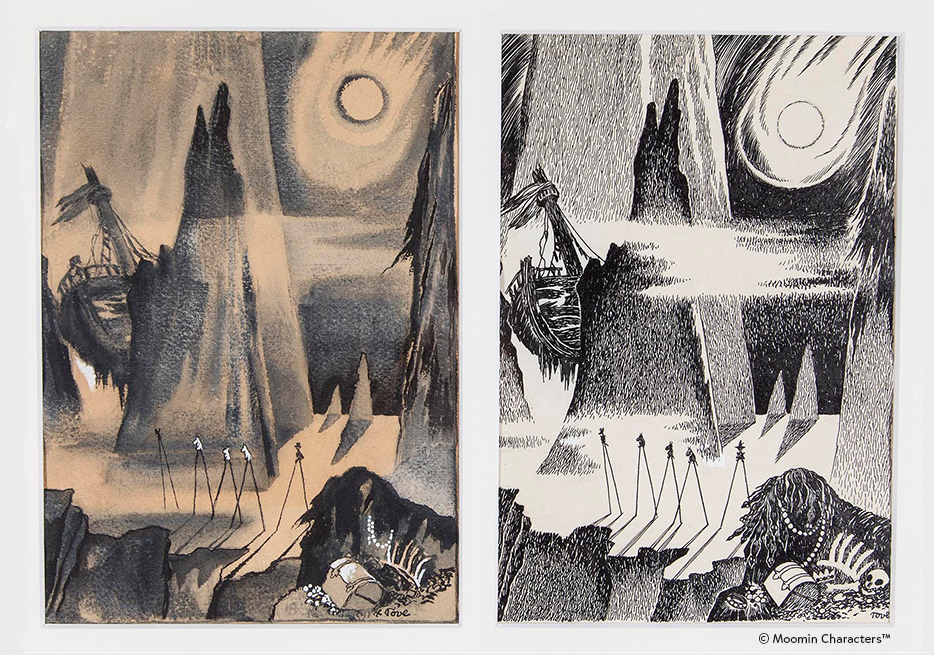
The English translation of Kometjakten was published in 1951. This version is still in print in English. It differs from most other editions currently on the market since most are based on the last Swedish edition from 1968, Kometen kommer.
You’ll find out more about the various editions in our upcoming article.
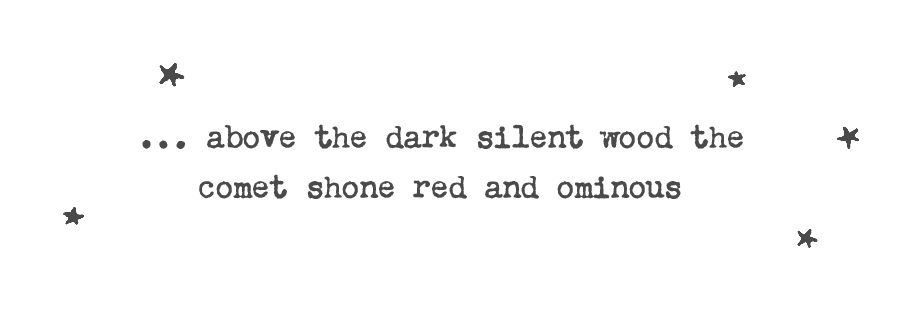
Comet in Moominland: Plot summary
This is how Tove Jansson herself described the Comet in Moominland book in a tentative text for the back cover, as quoted by her biographer Boel Westin:
Far out in space the comet started out, burning and alone, followed by a tail of fire. It relentlessly approached the valley where Moomintroll lived with his father and mother. In the observatory in the Lonely Mountains they estimated that it would hit the earth on the seventh of October at 8.42. This is a book about the exciting time before the catastrophe, days when the sky became ever redder over Moomintroll, the little animal Sniff, Snufkin, the two Snorks, sister and brother, and the Hemulen. Extraordinary things happened to them on their dangerous journey, things that were terrible and yet at the same time fun, as they often are when we are little. Worst of all were perhaps the octopus on the dried-up seabed and Moomintroll’s struggle with the poisonous Angostura bush. Or perhaps the lizard defending the garnets. And the most fun was perhaps the pearl-fishery and the great party, but you must decide that for yourself when you have read the book and know how everything went.
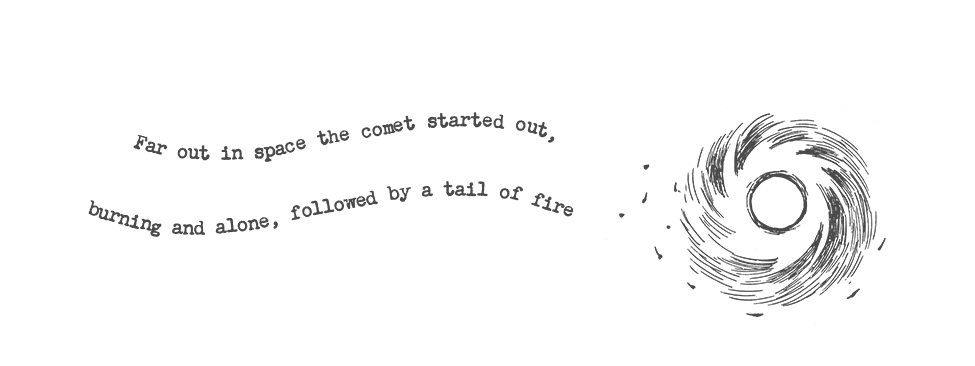
The more detailed plot summary below is based on Tove Jansson’s last revised version of the Comet in Moominland book, the Swedish version from 1968, and includes spoilers!
The story starts when Sniff finds a path into the dark forest, leading him and Moomintroll to the sea, where Sniff discovers a cave and Moomintroll dives in the waves.
A new acquaintance, the Muskrat, comes to the Moominhouse because his house has been destroyed by Moominpappa’s new bridge and the hard rain. Muskrat makes everyone gloomy, talking about the infinite universe and the catastrophe that will befall Earth.
They wake up to a grey world, everything covered in ashes. Moomintroll and Sniff are scared and unwilling to do anything, so Moominpappa and Moominmamma suggest they go and investigate the situation at the observatory mentioned by Muskrat.
Moomintroll and Sniff take a raft along the river towards the Lonely Mountains. They see a yellow tent and hear someone playing a harmonica. This is the first time they meet Snufkin. Snufkin tags along and shows them a cleft full of garnets, where Sniff almost gets attacked by a giant lizard. After being rescued from the river by a botanist Hemulen, Moomintroll finds a gold bracelet, and Snufkin tells them about Snorkmaiden and her brother, Snork. The trio finally reach the observatory, where the scientists tell them the comet will crash into Moominvalley four days later. Moomintroll thinks they will be alright as long as they get home. But first, they need to find Snorkmaiden to give back her ankle bracelet!

The next day, they find Snorkmaiden, and Moomintroll saves her from a poisonous bush. On their way back to Moominvalley, they stop to take part in a nightly dance.
In the morning, the comet has grown bigger. It is very hot and they realise the sea has retreated. As they cross the dry seabed on stilts, Moomintroll and Snorkmaiden end up in a shipwreck, where she saves him from a giant octopus by reflecting the light from the comet in her mirror. The next day, they meet countless creatures fleeing Moominvalley. They encounter another Hemulen, and when a cyclone comes, they use the Hemulen’s dress to fly home to Moominvalley, where Moominmamma and Moominpappa await. As night falls, they take cover in a cave as the comet is about to strike. The next morning, the sea returns, and they seem to have survived together, venturing out to see if the valley is intact.
Main characters in the book Comet in Moominland (in order of appearance)

Sniff
Sniff is introduced in the first book, The Moomins and the Great Flood, along with Moominmamma, Moomintroll and Moominpappa, and has since moved into the Moominhouse. He is afraid of most things and complains extensively. Sniff loves everything that sparkles and shines. As the smallest and most easily scared character, he thinks a lot about the kitten, who is even smaller, wishing it would need him and look up to him. Sniff feels very mature when he is allowed to go on the trip to the observatory with Moomintroll. Learn more about Sniff’s family tree here.

Moomintroll
Moomintroll is the main character in the Comet in Moominland book. He is brave and welcoming, leading everyone back to the safety of Moominvalley, but always trusting Moominmamma knows best. He meets both Snufkin and Snorkmaiden for the first time and is smitten by both, a theme that continues in subsequent books.
Learn more about the Moomin family here.

Moominmamma
Moominmamma is back at the Moominhouse holding the fort when most of the events happen elsewhere. However, she is the secure centre of the family, comforting everyone with her calm demeanour. “Mamma will know what to do” is Moomintroll’s reasoning for going back to Moominvalley in time for the arrival of the comet.

Moominpappa
Moominpappa is calm and interested in science and a bit disconnected from the feelings of the other members of the family. It is his idea to send Moomintroll and Sniff to the observatory.

The Muskrat
This is the first time we meet the Muskrat. He moves into the Moominhouse, or actually the hammock in the garden. The Muskrat has a philosophical, resigned worldview, and is oblivious to how much he scares Moomintroll and Sniff talking about the impending doom. He values being comfortable more than he wants to admit, as a philosopher should not care about mundane things like being warm or dry. He describes the universe by throwing around sandwiches.

The Hattifatteners
In this book, the pale grey-white Hattifatteners are only seen wandering in the distance in a couple of instances. They are mysterious creatures whose only motivation is to keep moving toward the horizon.

Snufkin
This is the first time Snufkin appears in Moominvalley. He is a free wanderer who wants to own as few things as possible, preferring to carry them in his mind. He plays tunes to keep everyone’s spirit up. Moomintroll introduces him as his best friend when they get back to Moominvalley. In the first version of the book, we learn that Snufkin has a rebellious side.
Learn more about Snufkin’s family tree here.
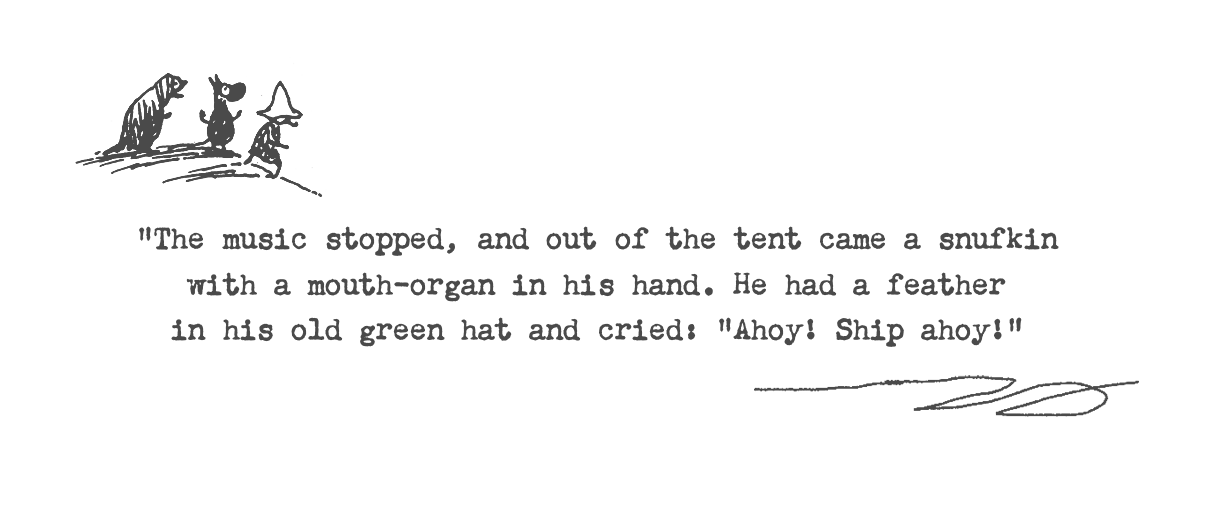

Snorkmaiden
Snorkmaiden appears for the first time in this book. Snufkin tells Moomintroll and Sniff about her existence and Moomintroll starts daydreaming about her before they actually meet. She saves Moomintroll from a giant octopus in a shipwreck on the bottom of the dried sea floor by dazzling it with a reflection of the comet. Snorkmaiden is fun-loving and a little vain. She is the one who insists on them going to the dance in the forest on their way to Moominvalley.
Snork
This is the first time the Snork is featured. He is Snorkmaiden’s brother. He loves to hold proper meetings and plan things, and wants notebooks with lines or squares. His happiness is at its peak when Moominpappa asks him to organize the move into the cave at the end. Fun fact: Tove Jansson called the first Moominlike figure she drew a Snork. And where did she draw it? On the wall of an outhouse in Pellinge archipelago.

Minor characters
Different Hemulens (stamp collecting, botanist), scientists in the observatory, creatures fleeing their homes in Moominvalley, forest creatures at the dance, the woman in the shop.
Central locations in Comet in Moominland
Moominvalley – a place full of happy little animals
It was a wonderful valley, full of happy little animals and flowering trees, and there was a clear narrow river that came down from the mountain, looped round the Moominhouse and disappeared in the direction of another valley, where no doubt other little animals wondered where it came from.

The beach – where we learn Moomintrolls like swimming
“Pooh!” said Moomintroll diving into a big wave and swimming down through green bubbles of light. He went deeper and came upon forests of crinkly seaweed swaying gently in the current –seaweed that was decorated with beautiful white and pink shells – and even farther down the green twilight deepened until he could see only a blackhole that seemed to have no bottom. Moomintroll turned round and shot up to the surface where a big wave carried him right back to the beach.”
They swim doggy-paddle, which we find out in the next book Finn Family Moomintroll.
Sniff’s cave – the ultimate safe space
Sniff finds the cave while following the kitten. The whole family hides in the cave when the comet comes in the end.
It is Snorkmaiden’s idea: “Why, what a wonderful idea!” exclaimed Moomintroll, looking at her in admiration. “How clever of you to think of it. Of course! We can hide in the cave when the comet comes!”
The hammock – the best place for big thoughts
The Muskrat’s preferred place to think deep and gloomy thoughts.
Perhaps it will come – perhaps not. It’s all the same to a person who knows that everything is unnecessary.
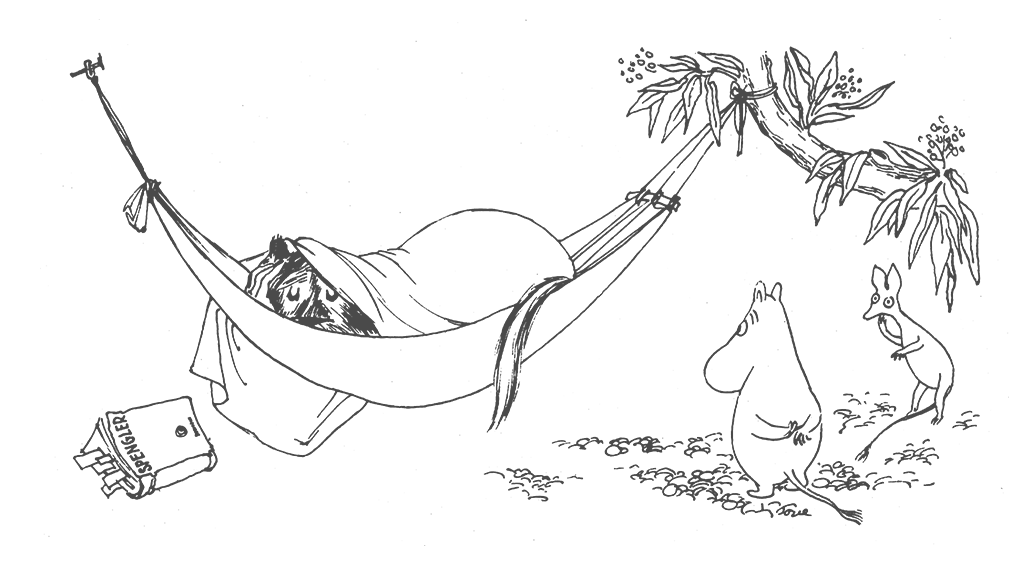
Snufkin’s tent – all a vagabond needs
Looks like a yellow triangle from the distance and is a place where Snufkin tells many stories from his past.
“I’m a tramp, and I live all over the place,” answered Snufkin. “I wander about and when I find a place that I like I put up my tent and play my mouth-organ.”
The observatory – a place for remarkable observations
On the very top of the jagged peak above them stood the Observatory. Inside, scientists made thousands of remarkable observations, smoked thousands of cigarettes, and lived alone with the stars.
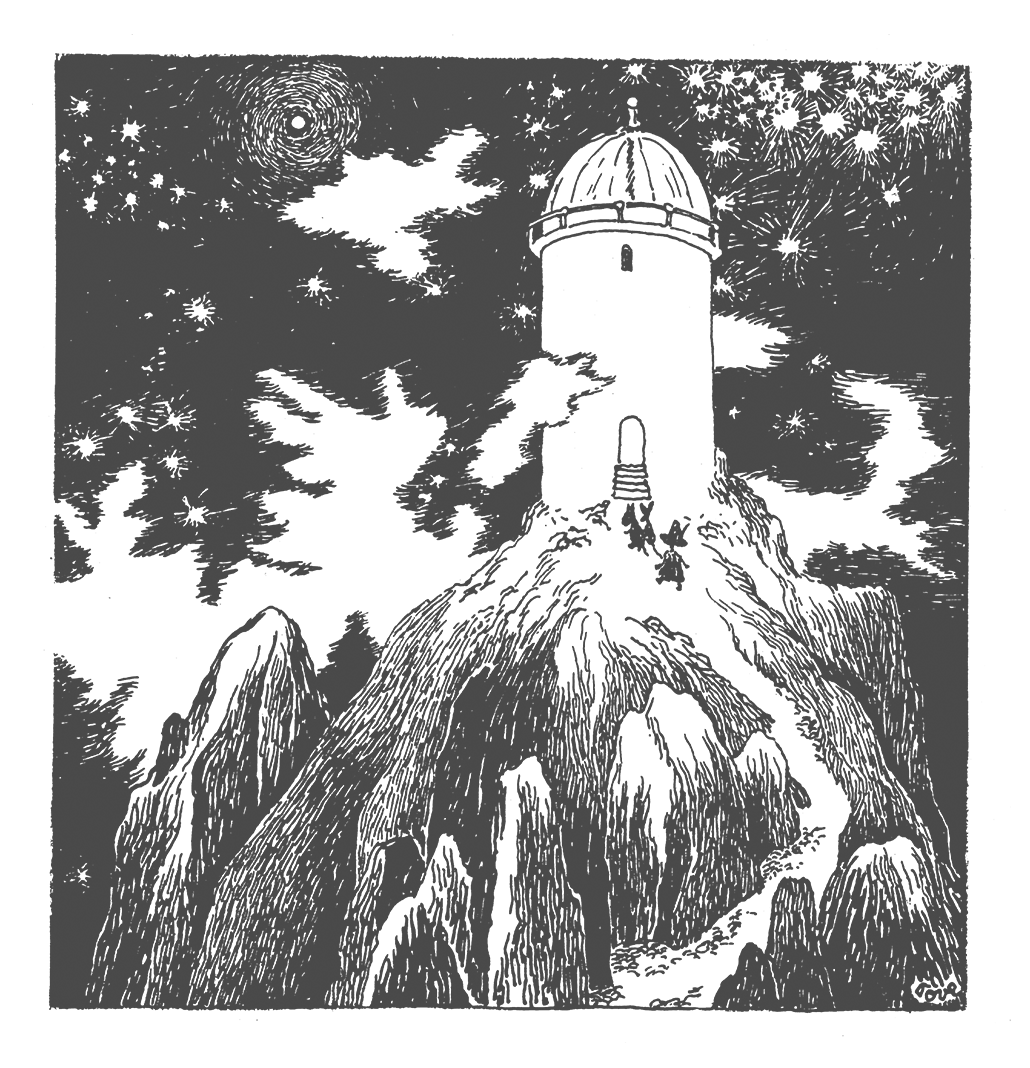
The Lonely Mountains – age-old giants
The age-old mountains towered into the sky, their dreaming heads lost in mist, and mist swirled in cold grey-white swathes in the chasms and valleys between.
The shop
It was a really good Village Stores. The garden had all the flowers you can think of planted in neat rows, and the house was white with grass growing on the roof.
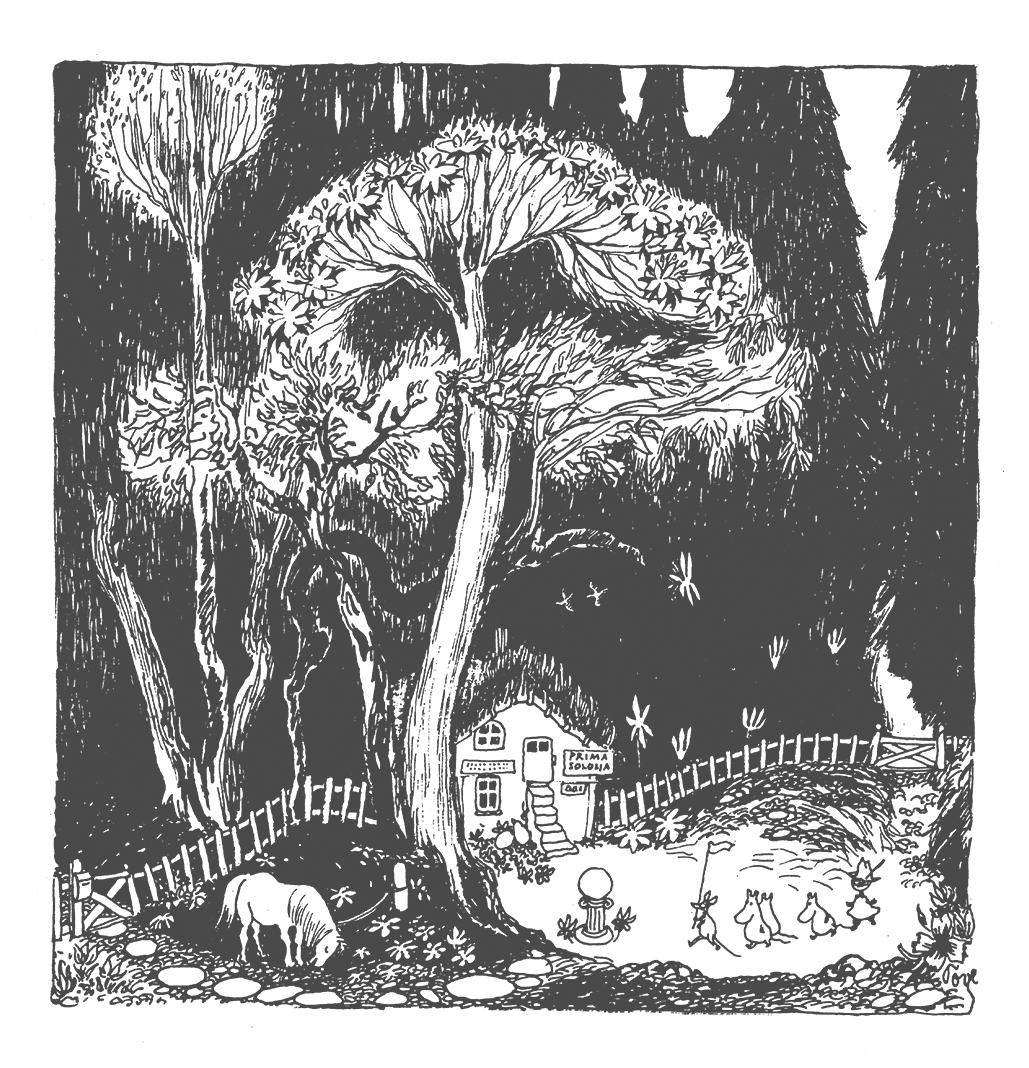
The dance floor in the forest
They found the dance floor in a little clearing, round which thousands of glow-worms had kindly festooned themselves.

The dried-up bottom of the sea
Where the sea should have been, with soft blue waves and friendly sails, there gaped a yawning Abyss. Hot steam rose from the depths of great cracks that seemed to go down to the very heart of the earth, and below them the cliff went down … down … “Moomintroll!” gasped the Snork Maiden. “The whole sea has dried up.”
Comet Moominology – Moomin facts from Comet in Moominland
The Comet in Moominland book provides some essential learnings about the Moomins any true fan should learn – in other words, some basic Comet Moominology. Here are some essential facts:
1. Moomins don’t wear clothes
“Now I’m going to bathe.” And he ran straight out into the breakers without stopping to undress. (because of course Moomintrolls don’t wear clothes, except sometimes in bed).
Interesting fact: This quote has been removed from the revised Swedish version!
2. Everyone is welcome in the Moominhouse
First, the Muskrat moves in, then Snufkin, Snorkmaiden and the Snork join them in the cave.
3. Hemulens often wear dresses (or uniforms in subsequent books)
“Heaven protect me!” gasped the Hemulen, and with this somewhat illogical request he gathered up his dress (a Hemulen always wears a dress – nobody knows why – perhaps they have never thought of trousers), and asked what he should do next.
In this quote, it appears that Hemulens always wear dresses, but in subsequent books, there are several hemulens in uniforms: working as park rangers, policemen, and matrons of orphanages, for example. All Hemulens share a sense of order, obligation and appreciation for detail, not understanding the joys of play and idleness.
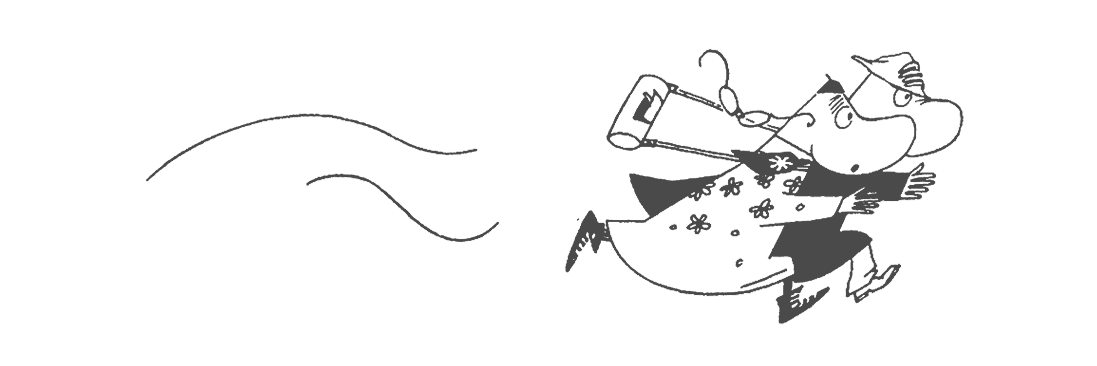
4. Snorks change colour when emotional
Snorks resemble Moomintrolls, but they are a different species. The main difference is that Snorks change colour according to their mood, whereas Moomintrolls are always white.
The Snork Maiden shivered and crept nearer to the fire. “Oh dear,” she said, “it doesn’t look very friendly.” And her colour slowly changed from pink to mauve.
5. A common way to express surprise for a Moomin is…
Strike me pink!
6. Snorkmaiden is not only vain, she’s also adventurous and bold
She saves Moomintroll from the arms of the octopus: “You saved my life you know! And in such a clever way too!… “I was very happy to do it,” she whispered. “I would save your life eight times a day if only I could.”
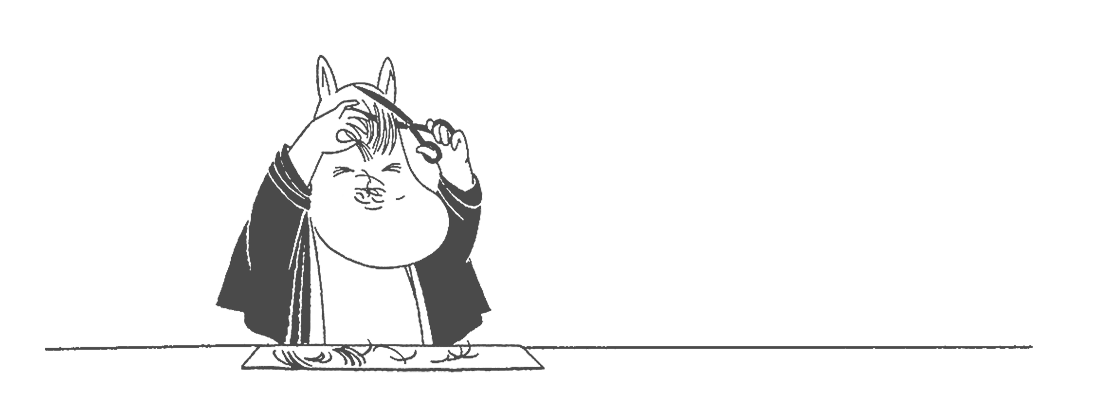
7. We learn what a tree spirit is
A tree-spirit is a beautiful little creature who lives in a tree trunk, but at night she flies up to the top of the tree to swing in the branches – she isn’t usually found in trees that have needles instead of leaves.
8. Snufkin is a rebellious type who doesn’t care for possessions
In the first edition of the book, we learn that Snufkin has been to prison, which he escaped by digging himself out with the help of a tin opener. This storyline is omitted from subsequent versions. We also learn that he doesn’t value things and likes old clothes more than new ones.
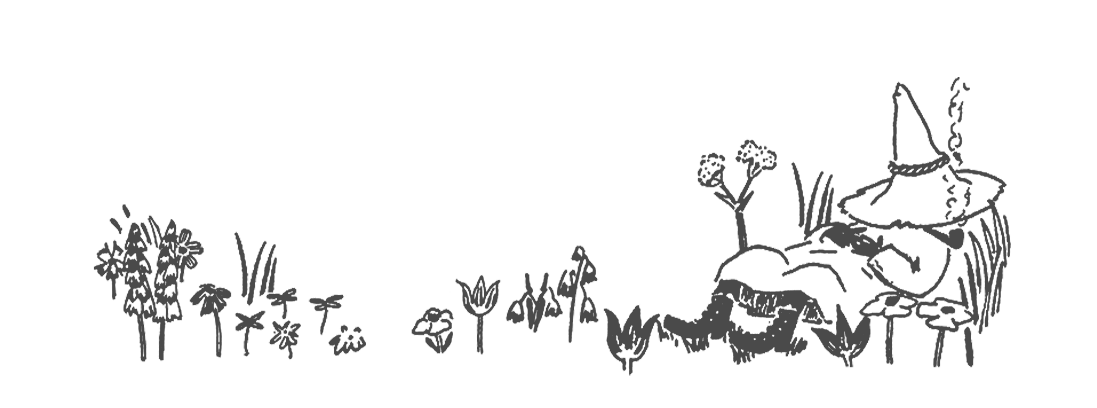
Context: Comet in Moominland and the real world
Like the first Moomin story, the Comet in Moominland book was partly written during the war. It features calamities and natural disasters of an apocalyptic scale, and seeing allegoric references to the war is tempting.
The Moomins and their friends display great resilience in the face of the existential threat posed by the comet. They show adaptability, resilience, and the capacity to overcome challenges in the most Moominous fashion – through dancing, baking cakes and being curious about what’s lurking in the vast, dark space.
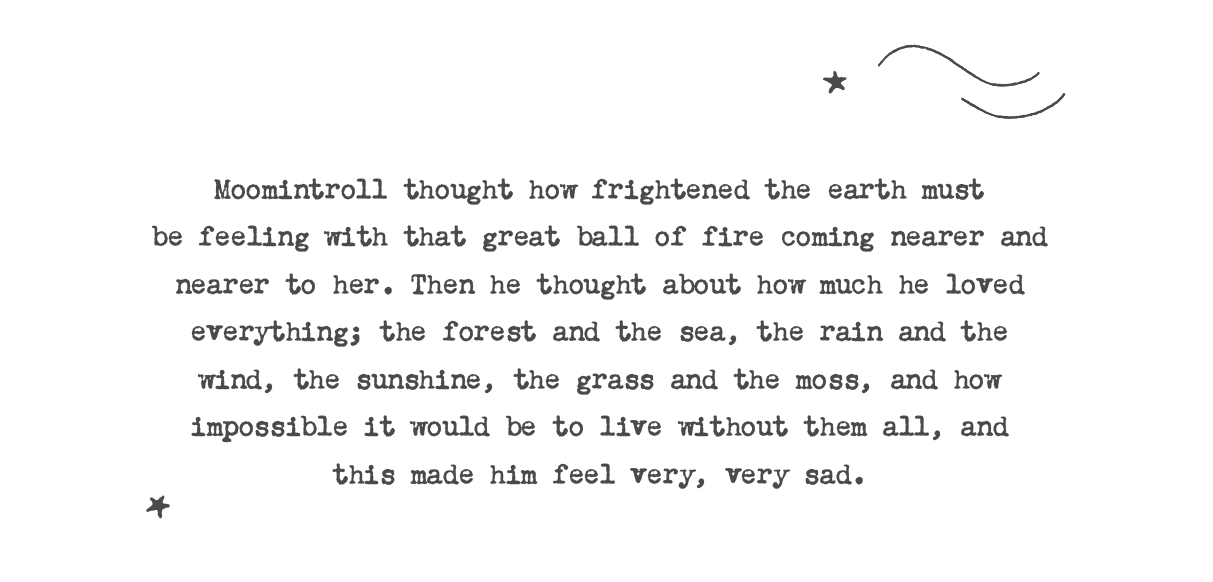
The comet and the war
The comet is a very powerful symbol. One of the most obvious interpretations is that of a bomb.
The comet which threatens the mere existence of Moominvalley can be compared to the most potent bomb of all – the atomic bomb with its absolute power of destruction. In 1946, when the book was published in Swedish, the collective memories of the last days of WWII with the bombs over Nagasaki and Hiroshima were still fresh. Some reviewers have seen certain passages in the book as direct representations of the Second World War.
As Moomintroll and his friends rush home towards Moominvalley after seeing the comet through a telescope, they meet masses on the run from the approaching comet in a scene which could take place in any war-ridden country or place hit by natural catastrophe:
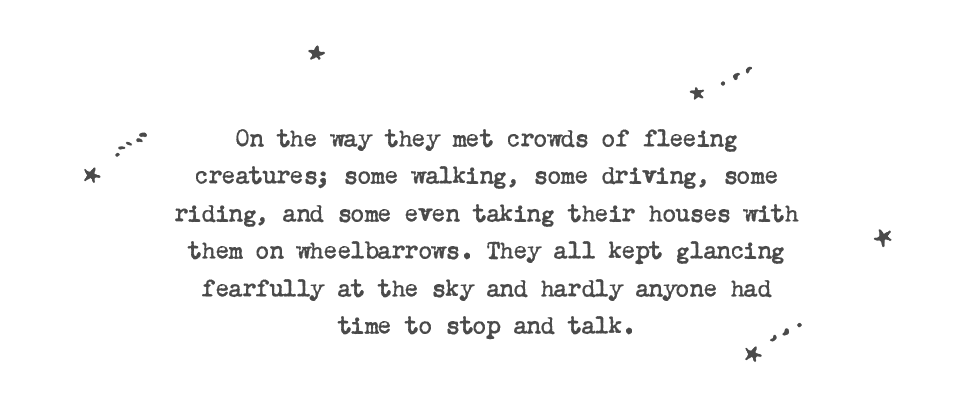
According to Literature Professor and Jansson biographer Boel Westin, “… there is no depiction of catastrophe to match Comet in the children’s literature of the Nordic countries at the time. But when Tove wrote her comet story in war-ravaged 1940s Finland, she was describing conditions people had lived with every day.”
The shopkeeper, whom Moomintroll and his friends invite to come to the cave, says that she doesn’t need to – she will take cover from the comet in her cellar. The cave where the Moomin family and their friends take cover to wait for the comet is very similar to a bomb shelter. Taking cover in such a place was an experience shared by many Finns. The Soviet Union bombed Jansson’s home city, Helsinki, several times, and planes flew low over the islands in her beloved Pellinge archipelago.

Apocalyptic scenes for a time of climate change
Many of the scenes in Comet in Moominland are apocalyptic, to say the least. Today, it is easy to read the Comet in Moominland book as an allegory for a future in which climate change is making the world unlivable.
It was gloomy and desolate on the shore with the great gap that had been the sea in front of them, the dark red sky overhead, and behind, the forest panting in the heat. The comet was very near now. It glowed white hot and looked enormous as it rushed towards Moominvalley. In the red gloom under the trees not a breath of life stirred: all the small creatures had hidden themselves underground and were cowering there, silent and afraid.
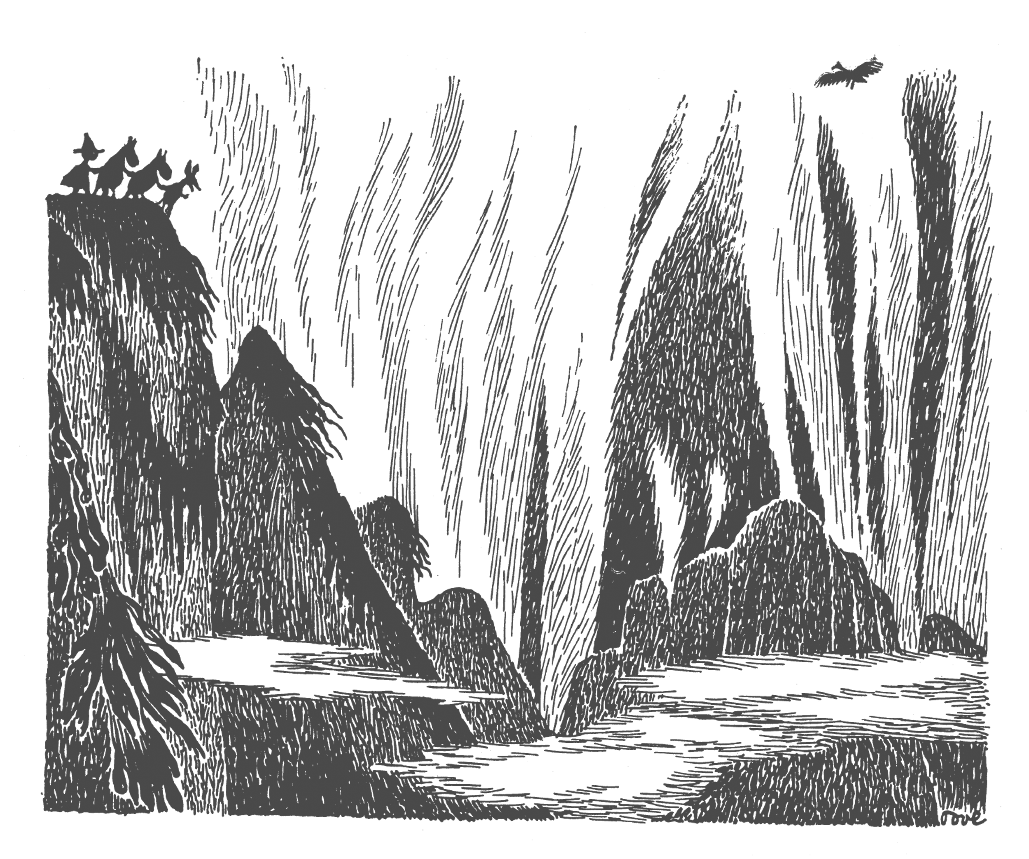
Dancing in the face of the comet
Another approach to the annihilating threat of the comet than hiding is also present in the book. It is the more joyous approach represented, for example, by Snorkmaiden, who insists on taking time to dance as the comet draws nearer.
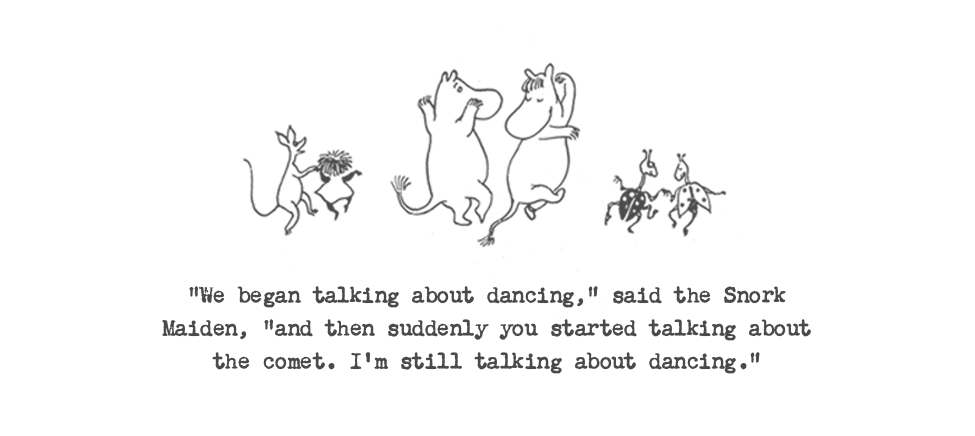
This approach was mirrored in the real-life parties of the war years, when people danced, drank, ignored the bombs and lived for the moment behind windows blackened with curtains, not to give bomb planes easy targets.
Boel Westin notes how the comet summons up the fundamental urge, the will to live, which she sees as the central message of the story. “It is about the little person’s challenge to the great powers, about having the strength to live and the ability to manage.”
At the same time, the Comet in Moominland book shows how small the characters are in front of the natural forces, putting their daily struggles into proportion.
Tove Jansson’s life when writing the Comet in Moominland book
During the war years, Tove Jansson said she lost her colours, the will and ability to paint. As the comet threatens Moominvalley, the valley experiences the same loss of colour as Jansson’s inner landscape.
As Boel Westin notes: “Nature had been emptied of life, it had been deprived of colour. The sun vanished, the moon became pale green and faint, the blue sky was tinted red and at night the stars were hidden.”
Tove Jansson wrote Comet in Moominland during the summer of 1945, the same year as the first Moomin story, The Moomins and the Great Flood was published. The book was accepted for publication in the spring of 1946 and was available in bookshops already the same autumn. By that time, Jansson was already writing the next story, Finn Family Moomintroll.
During the summer of 1945, Tove Jansson spent time in the Åland islands between Finland and Sweden. This was the birthplace of her partner at the time, Atos Wirtanen, a journalist and member of the Finnish parliament. Jansson returned to the Åland islands many years later to paint the only oil painting featuring Moomin characters she ever made.
Tove Jansson drew the images for the story after finishing the text. According to her biographer Boel Westin, Jansson created the illustrations for what she called “Moomintroll 2” during two intensive weeks in May 1946. She also thought a lot about how the text and images should be presented on the spreads, crafting dummies, which she formatted page by page.
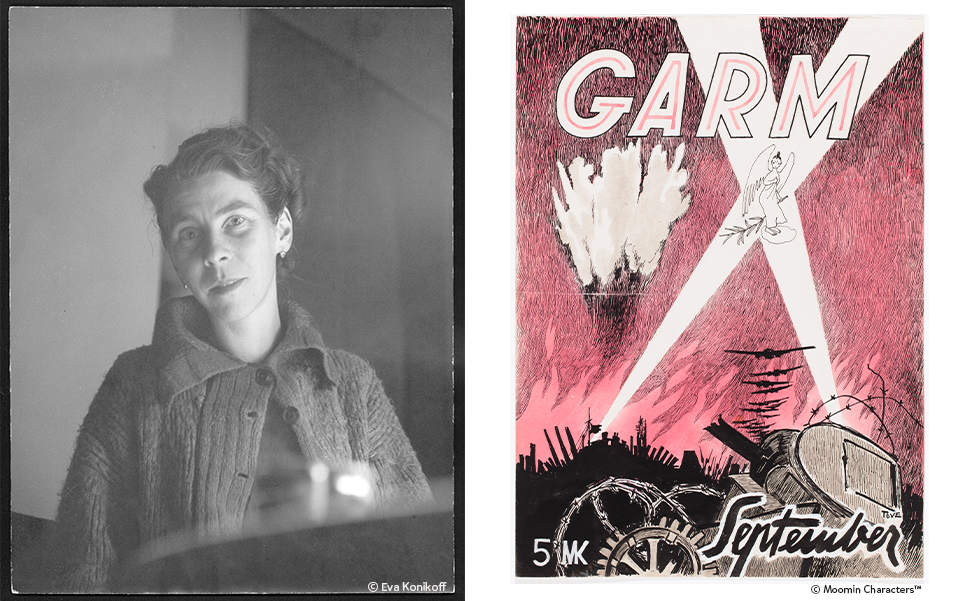
Faith, Philosophy and Science – inspiration for Comet in Moominland
There are many Biblical references in the first Moomin books, especially in the first edition of the Comet in Moominland book.
Tove Jansson’s maternal grandfather was a clergyman in Sweden and used to preach to the king. Tove also read the Bible on her own. Her teenage diaries are full of Bible quotations.
Biblical references in Comet in Moominland
Comets had fascinated Jansson ever since she was young. In her biography, Boel Westin quotes a note from Tove’s youth, where she writes about how God will send comets towards the earth as a punishment for men’s hubris if they were to reach into the infinity beyond the planets: “… then God will be angry, and send a comet, of a sort which would fall more or less every other minute but never actually hit the earth. But now it is on its intended course, heading straight for our world, when we are at our most arrogant and sure of ourselves.”
Comet in Moominland begins with mystical signs observed in nature, birds and ants moving in the formation of a star, foreshadowing the arrival of the comet like a sign from an all-knowing might. The threat of the comet is existential, often described in Biblical terms, such as plagues of Egyptian grasshoppers.
Suddenly the red sky was darkened by a cloud of flying creatures that first sank, and then dived straight into the wood. “It’s a swarm of grass-hoppers!” cried the Snork.

Scientists in Comet in Moominland
In Tove Jansson’s story, also science has a role. One example is the astronomers, presented as serious scientists living in their observatory in the Lonely Mountains, in “isolation together with the stars”.
They are the ones who know when the comet will hit: “… on the seventh of October at 8.42 in the evening. Possibly four seconds later.”
High up in their observatory, an ivory tower of sorts, they are not planning for what happens after – “but they will record the course of events in great detail.” One of the professors says it’s the most interesting thing that has happened to him in his entire life, and he can’t be concerned with Moomintroll’s question about Snorkmaiden, who is missing.
“I know nothing about it, except that there was a tiresome female here disturbing me about some trinket she had lost. Off with you now! You’ve already wasted forty-four seconds of my time!”
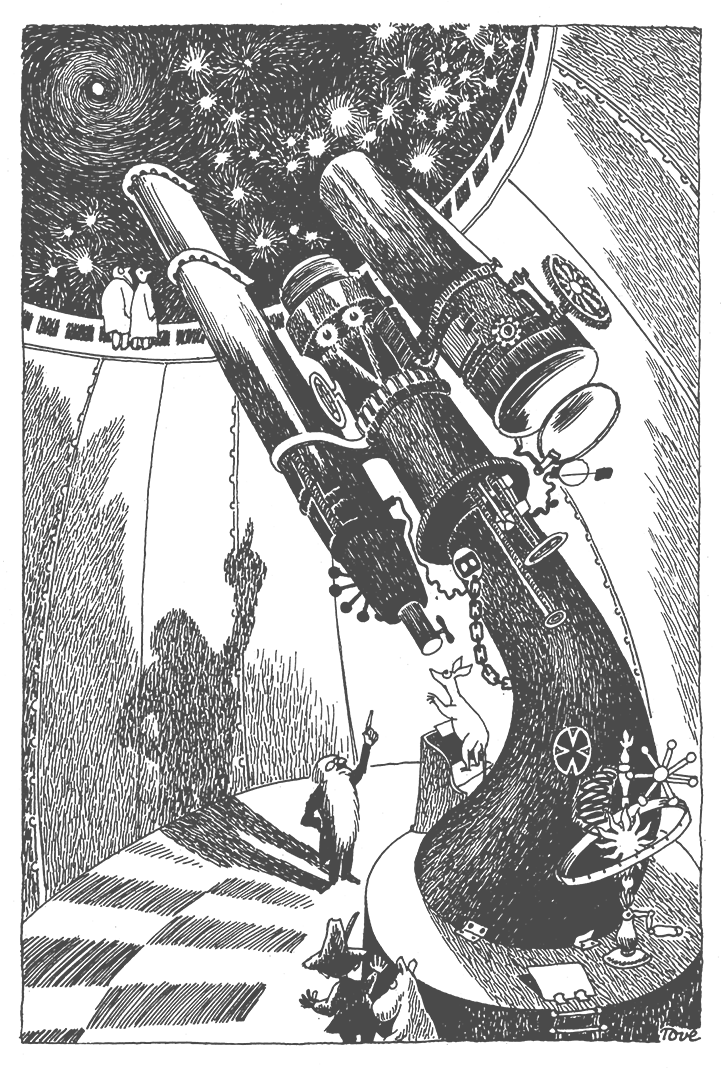
The two Hemulen collectors, one of whom specialises in butterflies, and his cousin, who collects stamps, represent another kind of scientist. According to Boel Westin, both represent how detached science can become from real life. The stamp-collecting Hemulen can’t stand his butterfly-collecting cousin, and finds him overly absorbed by his interest – amusingly not noticing the similarities to his own obsession with stamps:
“He had no interest in anything but his old butterflies,” said the Hemulen. “The earth could crack under his feet and it wouldn’t bother him.”
Westin sees the Comet in Moominland as a sharp critique of isolationist science, the inability to see beyond the boundaries of one’s own subject and to have any sense of proportion.
Muskrat – the philosopher in Comet in Moominland
In the 1940s, Tove Jansson immersed herself in philosophy, perhaps inspired by Atos Wirtanen and his literary friends. “Atos went to the muskrat swamp and pondered upon Nietzsche,” wrote Tove in her diary on 10th May 1945.
She read, for example, Nietzsche, Schopenhauer and Bergson. Many of these influences can be seen in the furry philosopher of Moominvalley, the Muskrat.

But whereas the real-life Wirtanen was a life-affirming, happy person, the Muskrat Tove Jansson created is a more nihilistic, sombre character with little interest in the daily affairs of those surrounding him.
The Muskrat ponders the implications of the comet from a philosophical standpoint, concluding that it doesn’t matter as everything is pointless anyway.
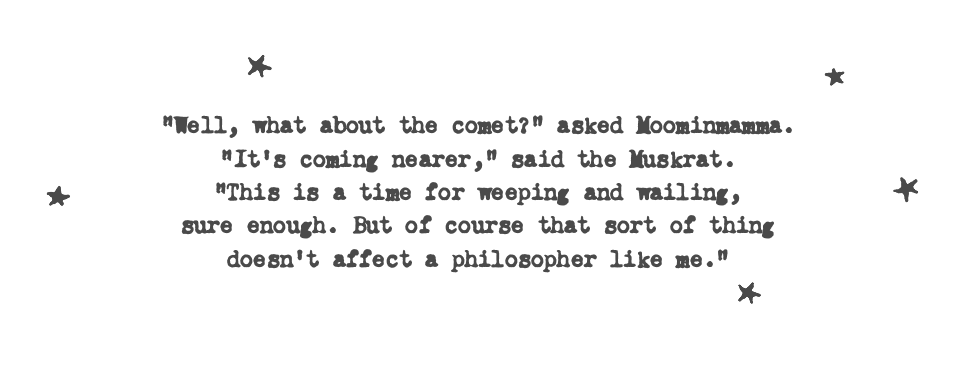
Muskrat is reading Oswald Spengler’s famous book about the destructive cycles of Western civilisation and cultural organisms, Der Untergang des Abendlandes (The Decline of the West, 1918–22.)
Critical reception – how Comet in Moominland was received
Comet in Moominland was no immediate commercial success, neither in Finland nor in Sweden, where it was published a year later. Despite the book not finding many readers initially, the reviews were favourable.
The story was compared with Winnie the Pooh and Disney and, particularly interesting, it was spoken of as a book with appeal for children and adults alike.
The publishers also encouraged this line. The blurb on the back cover claimed that the author was such a versatile storyteller that she was capable of entertaining “full-grown children as well as younger ones.”
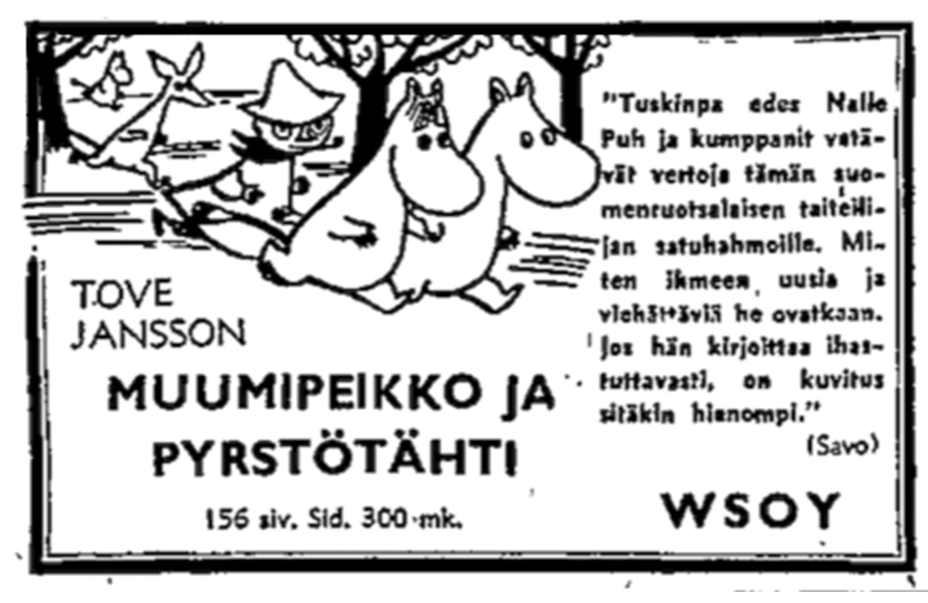
Adaptations of the Comet in Moominland book
Theatre
Mumintrollet och kometen, 1949, Svenska Teatern, Helsinki
The idea of bringing the Moomins to the theatre came from Tove Jansson’s close friend and former lover, the theatre director Vivica Bandler.
The theatre board initially deemed Tove Jansson’s text unsuitable for a children’s production, but it finally premiered on December 29th, 1949, directed by Bandler. Jansson herself was heavily involved, overseeing not only the script but also designing the costumes and sets.
The play received positive reviews from both the audience and critics, although some found the play unsuitable for young children.
Mumintrollet och kometen marked a new, captivating era in Tove Jansson’s career, which would go on to include numerous successful theatre productions. Fun fact: Moomin flagship store, opened in November 2023, in the same building as the Swedish theatre. Read more about the first Moomin play here.
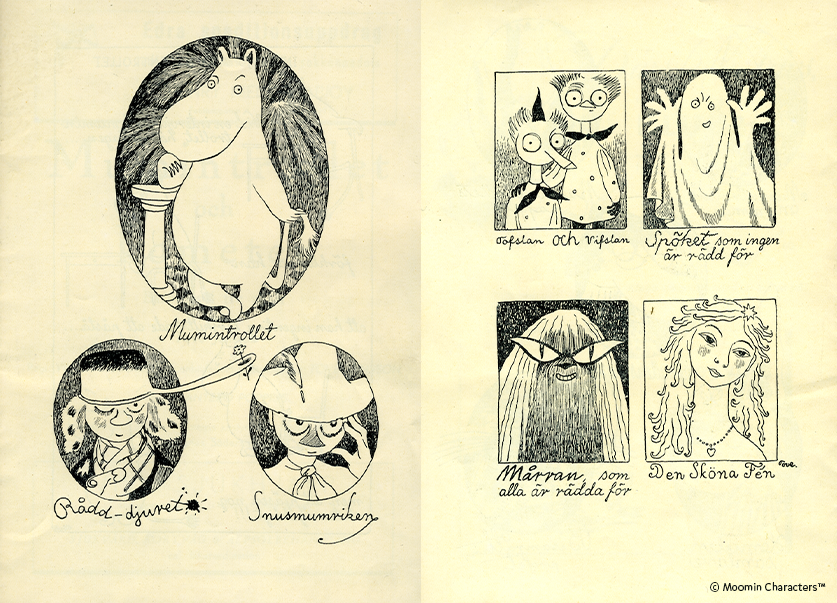
Comics
Tove Jansson created two cartoon versions of the comet story. The first one, titled Mumintrollet och jordens undergång (translated as Moomintroll and the End of the World in 2008), was published in the magazine Ny Tid in Finland between 1947 and 1948. It was the first Moomin-themed comic and closely followed the book’s plot, although the ending was different, with a tsunami flooding the valley and extinguishing the comet, and some characters were left out. Thingumy and Bob also made appearances, but their connection to the Moomins’ adventures wasn’t fully explored until the following year’s book Finn Family Moomintroll.
The second comic version, entitled Moomin and the Comet was created by Lars Jansson and illustrated by Tove Jansson in 1958 as part of the ongoing comic strip the Janssons created for the Evening News for almost two decades. While the plot underwent significant changes, some original scenes remained. This version included Moomintroll, Snorkmaiden, and Little My as central characters.

TV
The Moomins (in Polish, Opowiadania Muminków) is a partial stop-motion animated series produced by the Polish Se-Ma-For studio based on Tove Jansson’s Moomin books and comics, among others Comet in Moominland. The television series was produced between 1977 and 1982 and was a collaborative effort involving Germany, Poland, and Austria. Before the filming of each episode, the scripts were sent to Tove and Lars Jansson in Finland for review. Originally, the series was broadcast in Germany and Poland as 8–9-minute segments, resulting in a total of 78 episodes. Read more about Moomin animations here.
Film
The captivating tale, inspired by the novel Comet in Moominland, made its animated debut in 1992. This whimsical Finnish-Japanese-Dutch collaboration, produced by Dennis Livson, marked a groundbreaking moment as the world’s very first feature-length Moomin film. Recently, it was revitalized with enhanced sound and colors.
In 2010, a stop-motion animated film titled Moomins and the Comet Chase was produced. The film comprises episodes derived from the 1977–1982 The Moomins TV series mentioned above. Through meticulous restoration and a brand-new soundtrack featuring multiple voice actors, this adaptation breathes new life into the narrative. Icelandic artists Björk and Sjón, both passionate Moomin fans, contributed to the film by composing The Comet Song.
Other
In 2015, the Finnish National Ballet staged a ballet production inspired by the book Comet in Moominland. While the Moomins’ physical characteristics may not be the most conducive to ballet, the other characters from the Valley gracefully handled the classical ballet elements.
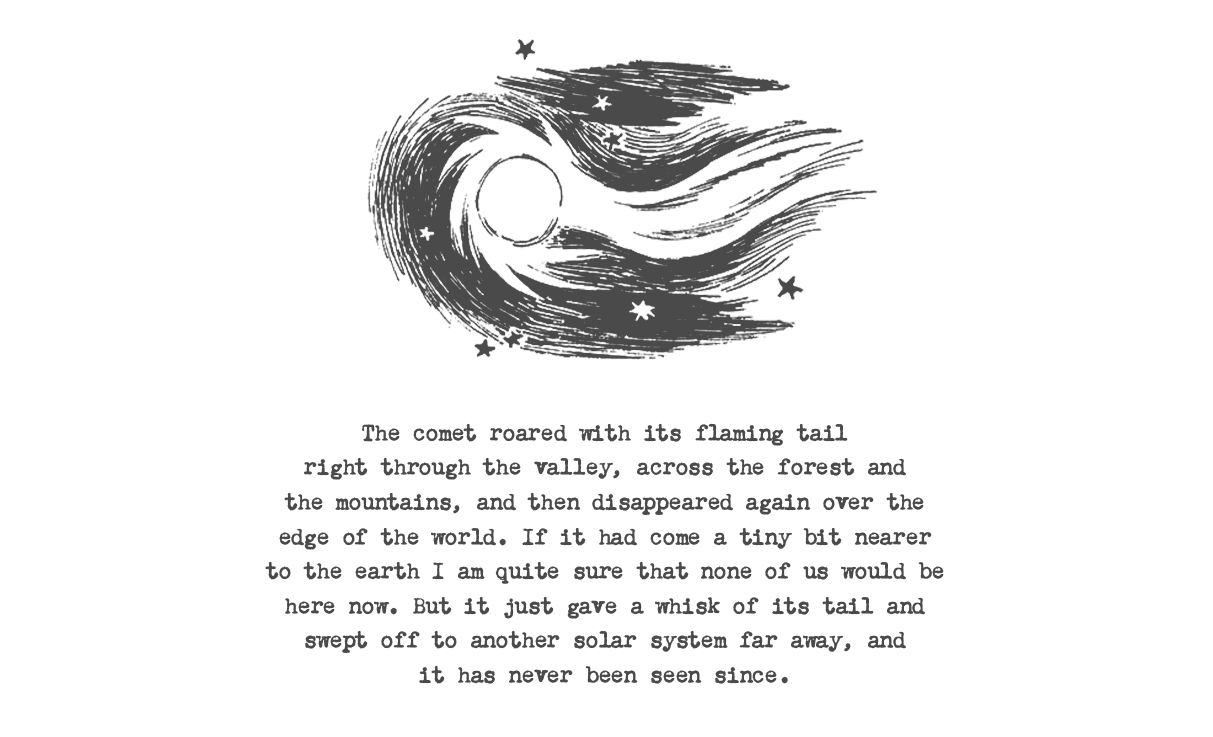
Sources:
– Jansson, Tove. Comet in Moominland (original title Kometjakten 1946). English translation: Elizabeth Portch. London: Sort of Books 2017.
– Jansson, Tove. Kometjakten. Helsingfors: Söderströms 1946.
– Jansson, Tove. Mumintrollet på kometjakt. Helsingfors: Söderströms 1956.
– Jansson, Tove. Kometen kommer. Helsingfors: Förlaget 2016.
– Moomintroll and the End of the World. English translation: Peter Marten. Helsinki: Tigertext Ab/Ny Tid 2008.
– Westin, Boel. Tove Jansson. Life, Art, Words. English translation: Silvester Mazzarella. London: Sort of Books 2014.
Read more about Comet in Moominland in this series about how Moomin books can give comfort in times of global crises.

Mamma will know what to do – How Moomin books comfort us in times of crises, part 1
The first blog of a two-part series, this blog explores how the Moomin books comfort us in times of crises, decades after their creation.

Dance in the face of the Comet – How Moomin books comfort us in times of crises, part 2
The second blog of a two-part series, this blog looks deeper into how the Moomin books help readers around the world deal with global crises.

